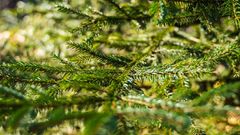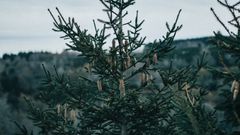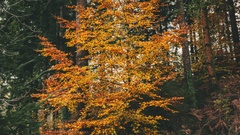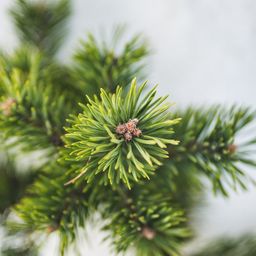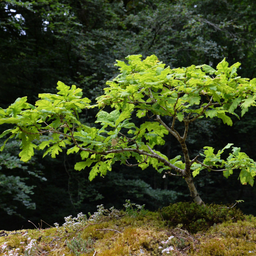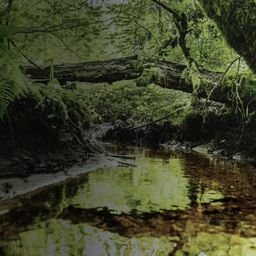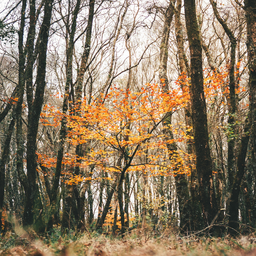Apr 29, 2024
Overcoming Steep Slopes and Sandy Terrain in Ajoux
After it was clear-cut, we reforested the Ajoux forest with a variety of tree species.

Located in the Parc des Monts d'Ardèche, the Ajoux forest has an interesting topography. The previous owner cleared the land of Douglas fir, and we decided to reforest it with a variety of species. Anyone who knows the Ardèche will not be surprised that this land is very steep. The planters showed great skill in planting this new forest.
Soil preparation at Ajoux: it's been a real sport!
Take a desolate piece of land that's been clear-cut. The suddenly bare soil has been washed away, and weeds have had a field day, so machinery has to be brought in to prepare it for planting. Why is this? Otherwise, the saplings planted will have great difficulty growing in the shade of bushes and tall grasses. Last but not least, soil preparation greatly facilitates the planters' work, which is done by hand. Planting in loose soil is much quicker and requires much less effort than planting in soil overgrown with grasses, rushes, and brambles...

As the land in Ajoux was difficult to access, the machines couldn't go everywhere, and sometimes the slope was too steep and the sandy soil slippery, so some of the slash windrowing (useful for biodiversity and soil enrichment) had to be done by hand.

What species should be planted?
Once the soil has been prepared, it's time to plant. To replace the Douglas fir monoculture that was present on the land before it was cut down at one time by its former owner, we have selected several tree species that we believe will serve their purpose for decades to come, namely to store carbon, enrich biodiversity, produce good quality wood and shape the landscape harmoniously. The species we have selected should be able to withstand the effects of ongoing global warming.

The objective species are pedunculate oak, sessile oak, Douglas fir and Atlas cedar, while the secondary species are walnut, sycamore maple and whitebeam.
How were the plants planted?
Ajoux's forest manager, Arnaud De Grave, visited the site in the spring of 2024 to observe the planters' work and advise them. Here's his report: “The forestry contractors are carrying out the first phase of reforestation following the clear-cutting of Douglas fir by the previous owner, as provided for in the simple management plan. This is a major project, and to manage the risks and spread the commitments a little, we have decided to carry it out in two stages. This tranche of planting involves more than 18,000 saplings (the target species are oak, Douglas fir, Atlas cedar and companion species such as walnut, whitebeam, etc.) covering some 11 hectares.
I visited the site last week (end of March 2024) to speak with the forestry technician from the firm we're working with on this project. He passed on to the planters the instructions for the planting plan that we had chosen. I think it's important to appreciate the difficulty of their work.

These four planters have endured the vagaries of the weather, even planting in the snow one morning!
The saplings are planted with great care on a plan with clusters of 6, 9 or 12 saplings of companion or diverse species (depending on whether or not these species behave socially). Of course, there will also be natural regeneration, mainly of chestnut trees on which we're counting, and the few identified areas already regenerating have been preserved. The project will be completed once the hardwoods have been protected and the softwoods have been sprayed with Trico.

We mustn't forget to clear in the summer, as competing species will be very present and aggressive. There are many ash trees, and broom will be a serious problem.
But the trees are in the ground now, and the rain has watered them!
